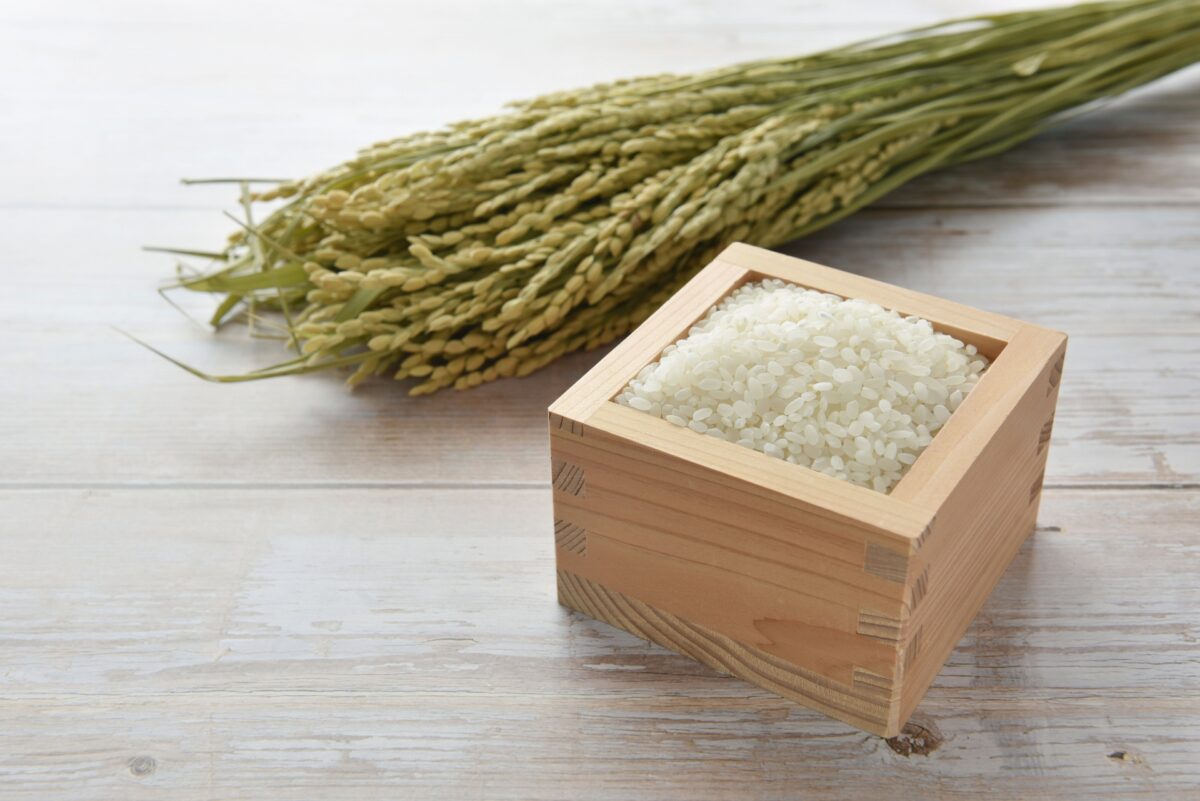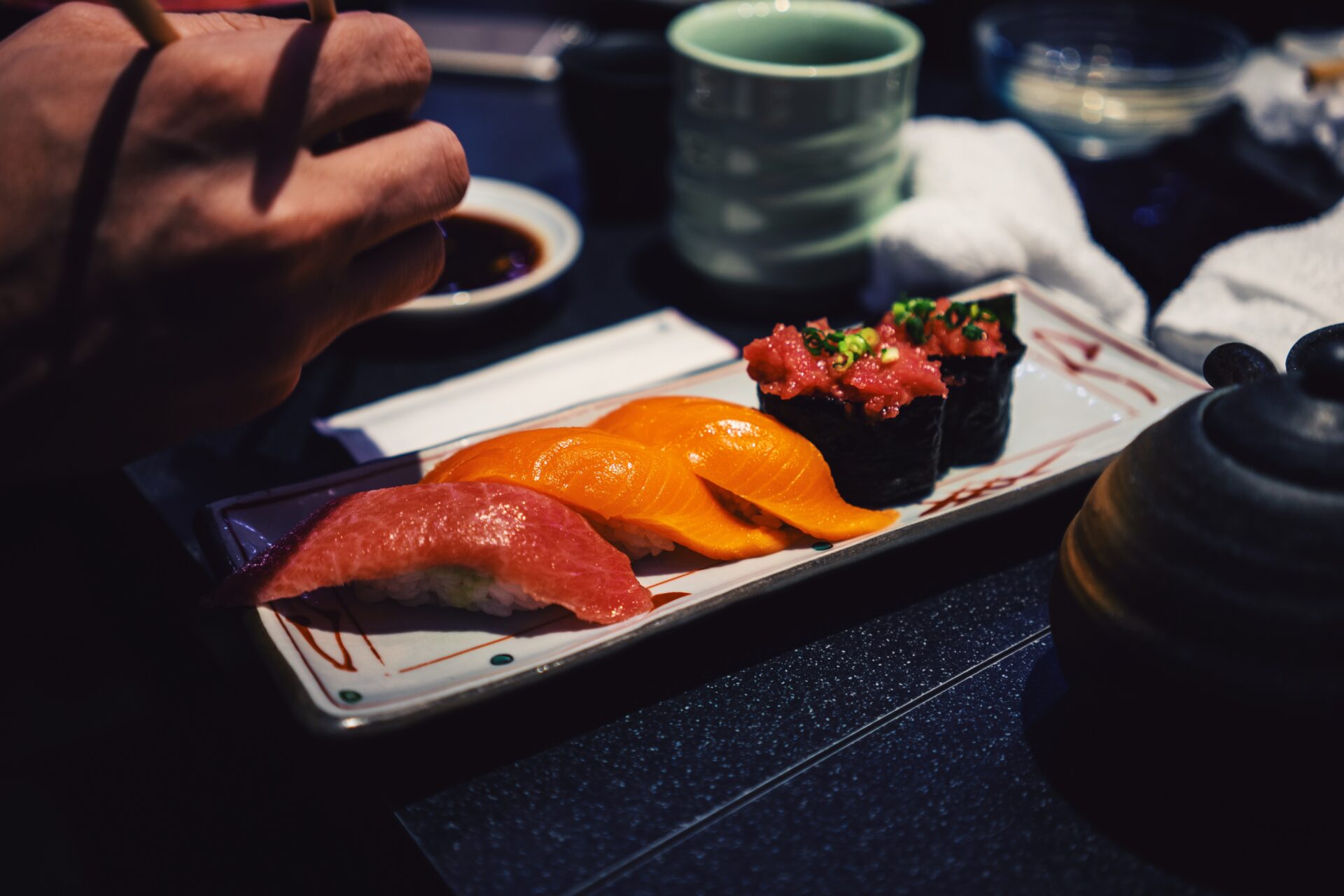
Mao Goto is a Japanese freelancer who was born in Hayama, Kanagawa prefecture, and raised in Tokyo. Since 2016 she lives in the Taito Ward, home to a lot of Japanese culture hotspots such as Asakusa, Akihabara, and Ueno. She has been interested in the field of English education in Japan and got her Master’s degree in March 2020. A lover of photography, travel, sweets, and cross-stitch. Contact her via Facebook.
This post may contain some affiliate links. When you click through and make a purchase we may receive some commission, at no extra cost to you.
Without rice, there would be no Japanese food. The staple food of Japanese people, rice is a very important food in Japan and is eaten for breakfast, lunch, and dinner.
But what is the reason that rice is such an integral part of the Japanese diet? In this article, we will take a closer look at the history of rice in Japan and why even today, rice still reigns supreme.
1. What is Rice?

Rice is a grain belonging to the Poaceae family and is typically planted in April or May so that it is ready for harvest in October in the fall. And while it may look straightforward, rice doesn’t just go from the farm, right to your table.
First, the rice seeds are planted in the paddy, and in the fall, the ears of rice yield many small grains called “momi”. When the momi have grown sufficiently, it is then time to harvest.
After harvesting, the rice is first threshed to remove the stalks and leaves. After that, the husks still attached to the rice grains are removed to produce brown rice grains. After this brown rice is polished, it finally becomes the white rice we know.
White rice is then soaked in water to absorb the moisture, and cooked in a rice cooker to produce fluffy, shiny rice. If the rice is cooked without seasoning, it can be eaten as is, but is often served with side dishes such as pickles, natto, furikake (fish cake), or raw egg!
2. When did rice come to Japan?

Despite its close connection to Japanese culture, rice in fact is not indigenous to the Japanese archipelago. Rice cultivation is said to have originated in the mountainous regions spanning Assam in India and Yunnan Province in China, where the remains of rice paddy fields and irrigation facilities dating back about 6500 years have been discovered.
Rice cultivation is then said to have been introduced to Japan at the end of the Jomon Period, and record has it that there were paddy field sites at the Itazuke site in Fukuoka Prefecture, which is approximately 2,400 years old, and the Inakadate site in Aomori Prefecture, as well.
3. Rice as currency in Japan

In ancient times, rice served not only as food but also as currency in Japan. In 701, a tax of 3% of the total rice harvested from a single rice field was required to be paid to the administrative government, and daily goods could be exchanged for rice. In the Heian period, farmers paid taxes to their lords on the rice they grew on their lords’ land in a feudal manner.
This tax system continued until the Edo period. This is because the rice grown on the land could be damaged by shipwrecks of transporters and accidentally covered with seawater as the sea trade picked up. The Meiji period however brought an end to the crop-based tax system with the advent of currency known as “yen”.
4. Why is rice eaten today in Japan?

There are many reasons why rice is still eaten in Japan today, but two of the biggest reasons are: First, Japan is an environment that is suitable for rice cultivation and hence has high yields. The abundant rainy season in June, which is early summer in Japan, along with the high temperatures provide a good environment for rice cultivation.
Second, rice is easy to preserve after harvesting. Even if a typhoon or strong wind causes a bad harvest, rice that has already been harvested can be stored for a long time, making it not only a safe crop but a smart crop.
5. Benefits of eating rice

The are various different benefits of eating rice. For example, the main component of rice is carbohydrates, which are broken down into glucose when consumed. This glucose is the source of energy for our brain throughout the day, therefore, eating rice for breakfast recharges your body for the day.
Rice also contains dietary fiber. This dietary fiber cleanses the intestines and improves bowel movements. However, be careful not to eat too much rice, as too much rice can lead to a carbohydrate overload.
6. Rice dishes in Japan
Sushi

Sushi is a typical Japanese dish that the world knows well. Rice mixed with a little vinegar is rolled up into a small ball, and sliced fish is placed on top. Sushi is also usually dipped in soy sauce before eating. There are a variety of different fish used to make sushi but often includes tuna, salmon and shrimp to name a few.
Onigiri

Onigiri is a fist-sized piece of rice that is usually hand-formed into a triangular shape and wrapped in dried seaweed. Onigiri is often filled with ingredients such as pickled plums, salted salmon roe, and seasoned kelp. It is one of the standard rice dishes often found in bento boxes.
Takikomi Gohan

When eating regular rice, it is good to cook white rice with just plain water, however, if the water is changed to something more flavorful like dashi, soy sauce, or sake, and cooked together with ingredients like carrots, fried tofu, mushrooms, the rice will become very tasty and flavorful. This is called takikomi gohan and the flavor of dashi will run through your mouth as you put it in your mouth!
Today, rice is most commonly recognized as just a food in Japan, but in the past, there was a strong connection between rice and Japan that rice was used as currency as well as a part of daily life. Many Japanese, from the young to the elderly, still eat delicious Japanese rice every day and it is an important part of Japanese culture.
Japan Wonder Travel Food Tours
Japan Wonder Travel is a travel agency that offers guided tours throughout Japan.
From private walking tours to delicious Food and Drink tours, we can help organize the best tours just for you! If you want to explore Japan and learn more about the history and backstories of each area you are traveling in, our knowledgeable and friendly guides will happily take you to the best spots!
In addition, we can provide you with any assistance you may need for your upcoming trip to Japan, so please feel free to contact us if you have any questions or need some help!
▶Tokyo Tsukiji Fish Market Food and Drink Tour
Explore the most lively and popular fish market in Tokyo where you will have the chance to try some of the local’s favorite street foods and sake along with your friendly English speaking guide!

▶Shinjuku Bar Hopping Tour: Experience Tokyo’s Nightlife in Izakaya
Check out the best spots in Shinjuku while bar hopping through the lively and vibrant area. Try some delicious local food and drink as you explore the narrow yet photogenic alleys that the town has to offer. Experience Japanese izakaya culture and drink in Shinjuku like the locals!

▶Explore Nishiki Market: Food & Culture Walk
If you’re looking to learn more about the culture and the local cuisine of Kyoto, this is the perfect tour for you! Take part in this Kyoto food and drink tour and explore the 400-year-old market and the surrounding areas.

Follow us on Instagram, Facebook, and Twitter for more travel inspiration. Or tag us to get featured!
Happy traveling!





